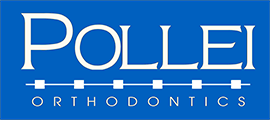Common Reason for Braces
Orthodontic problems – called malocclusions – occur when a person’s teeth or jaws do not fit together properly. Often orthodontic treatment is indicated in order to restore function, preserve health, facilitate speech, protect teeth from trauma, and improve esthetics. Below are descriptions of some of the more common orthodontic problems people have and before and after photos giving an example of each problem.
Note: All photos are from patients Dr. Pollei has treated, taken the day braces went on and came off
Class II Bite
A class II bite is when the upper jaw is overgrown, the lower jaw is undergrown, or a combination of both exists. It is one of the more common bite problems and is most effectively and efficiently treated while an individual is in their growth spurt.
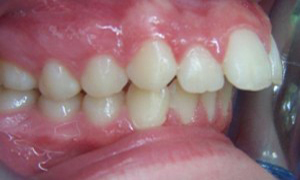 |
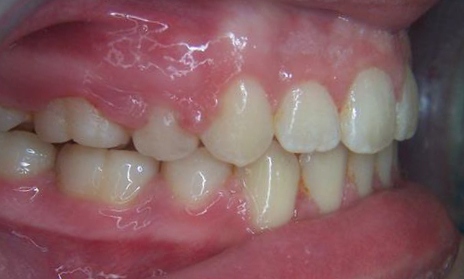 |
| Before | After |
Class III Bite (or Underbite)
An class III underbite is characterized by the lower jaw extending out in front of the upper jaw. This is most easily visualized when the lower front teeth are in front of the upper front teeth. Underbites often result in premature tooth wear and if untreated beyond growth may result in an increased likelihood of needing surgery to correct.
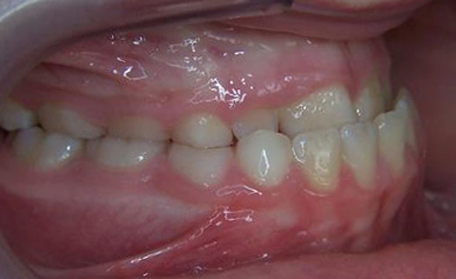 |
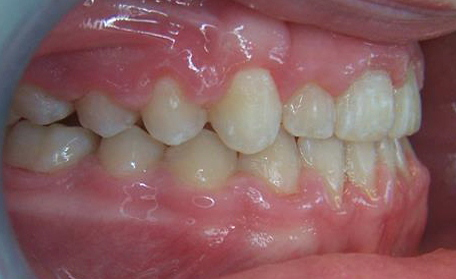 |
| Before | After |
Spacing
Spacing problems may result from missing teeth, proportionally small teeth, or tooth/jaw discrepancies. Any of these may result in a bite that is not aligned or functions improperly.
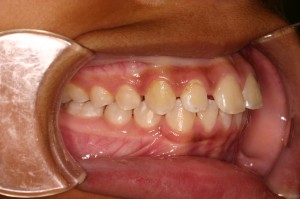 |
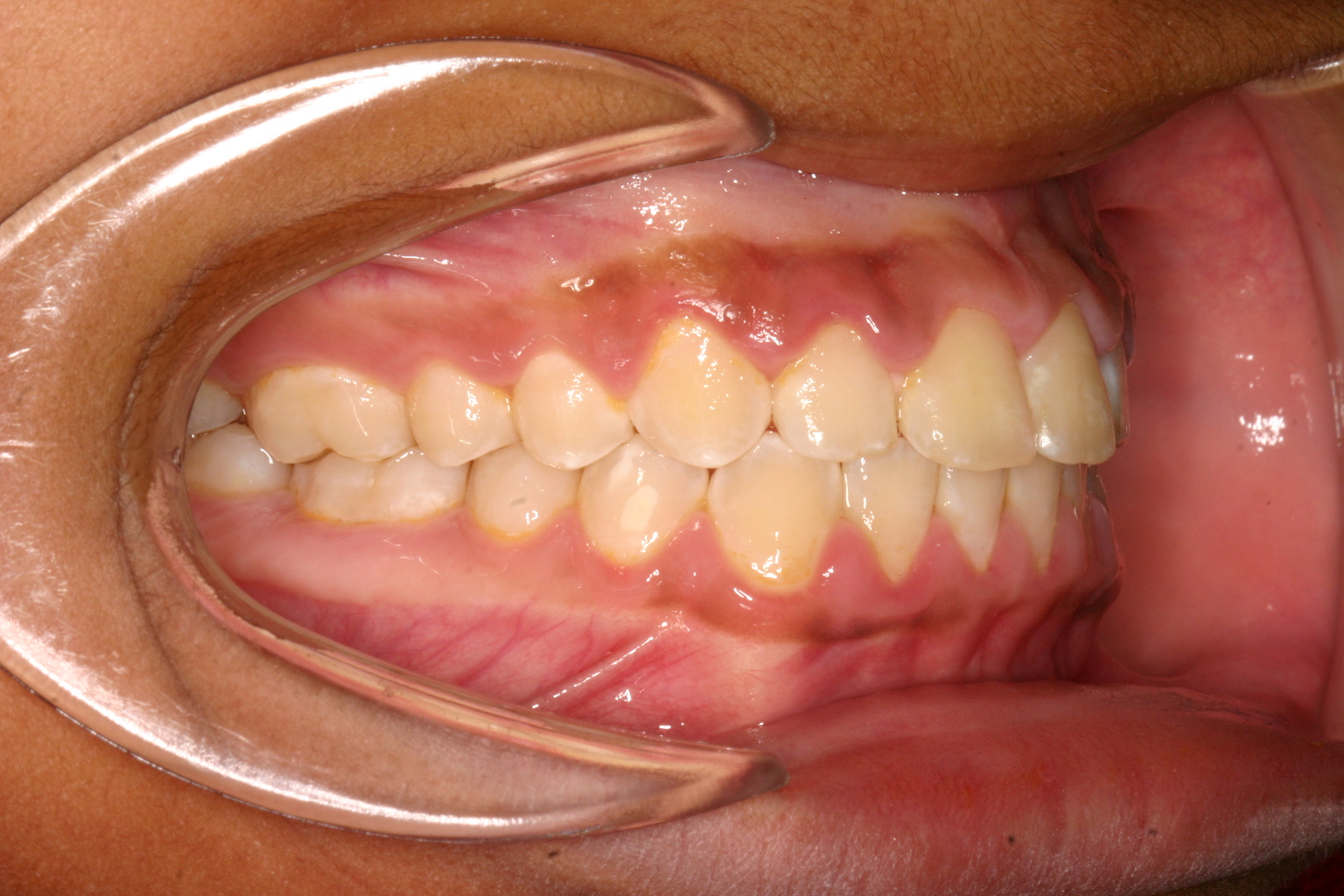 |
| Before | After |
Crowding
Crowding occurs when teeth have insufficient room to erupt from the gum. Crowding can often appropriately be corrected by expansion, and many times tooth extractions can be avoided with timely intervention and management.
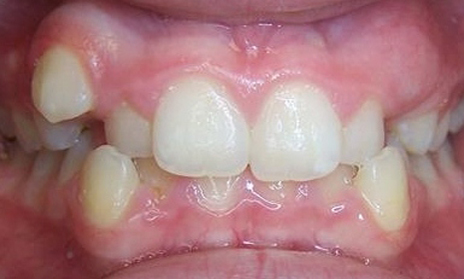 |
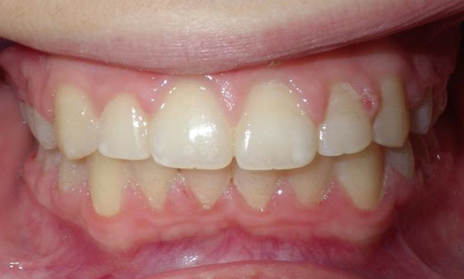 |
| Before | After |
Overbite
Excess overbite is present when upper front teeth cover up the lower front teeth excessively, sometimes causing the lower front teeth to bite into the roof of the mouth risking gum tissue damage.
 |
 |
| Before | After |
Openbite
An openbite exists if the upper and lower front teeth do not overlap. This often results in a compromise of proper chewing function or speech. An open bite is often the result of a thumb or finger sucking habit, and may have booth tooth and jaw effects.
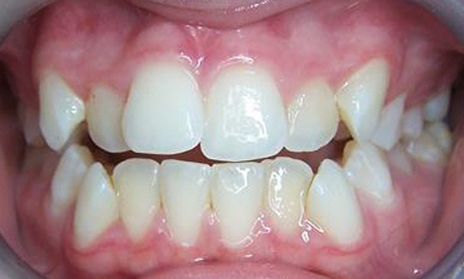 |
 |
| Before | After |
Crossbite
Crossbite is when the upper and lower teeth are either too wide or too narrow relative to each other. Usually the problem manifests by upper teeth sitting incorrectly inside of the lower teeth. This may cause tooth premature tooth wear and functional jaw shifts that can result in misaligned jaw growth.
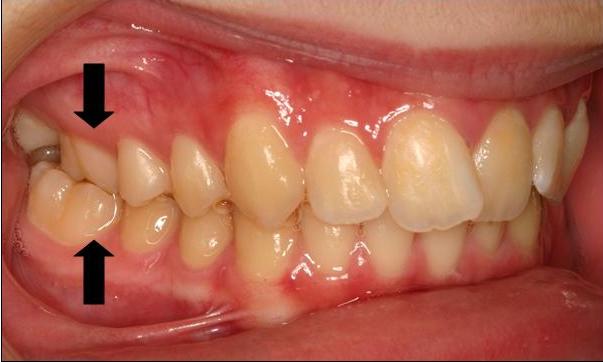 |
 |
| Before | After |
Impacted Teeth
An impacted tooth is a permanent tooth that is not able to grow into it’s normal position. Impacted teeth can be caused by crowding, obstruction by other teeth or extra teeth, or simply by a tooth developing in the wrong direction. Although any permanent tooth can become impacted, the teeth most commonly involved are canines and lower molars. Impacted teeth generally require immediate attention because an impacted tooth may cause destruction of an adjacent permanent tooth root or may require surgical removal if untreated.
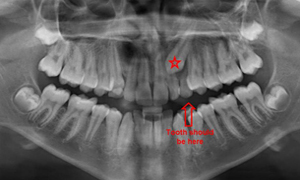 |
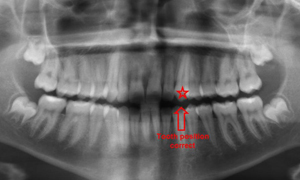 |
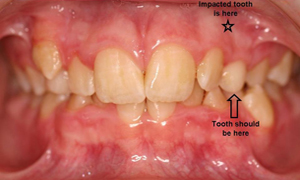 |
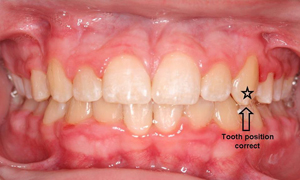 |
| Before | After |
